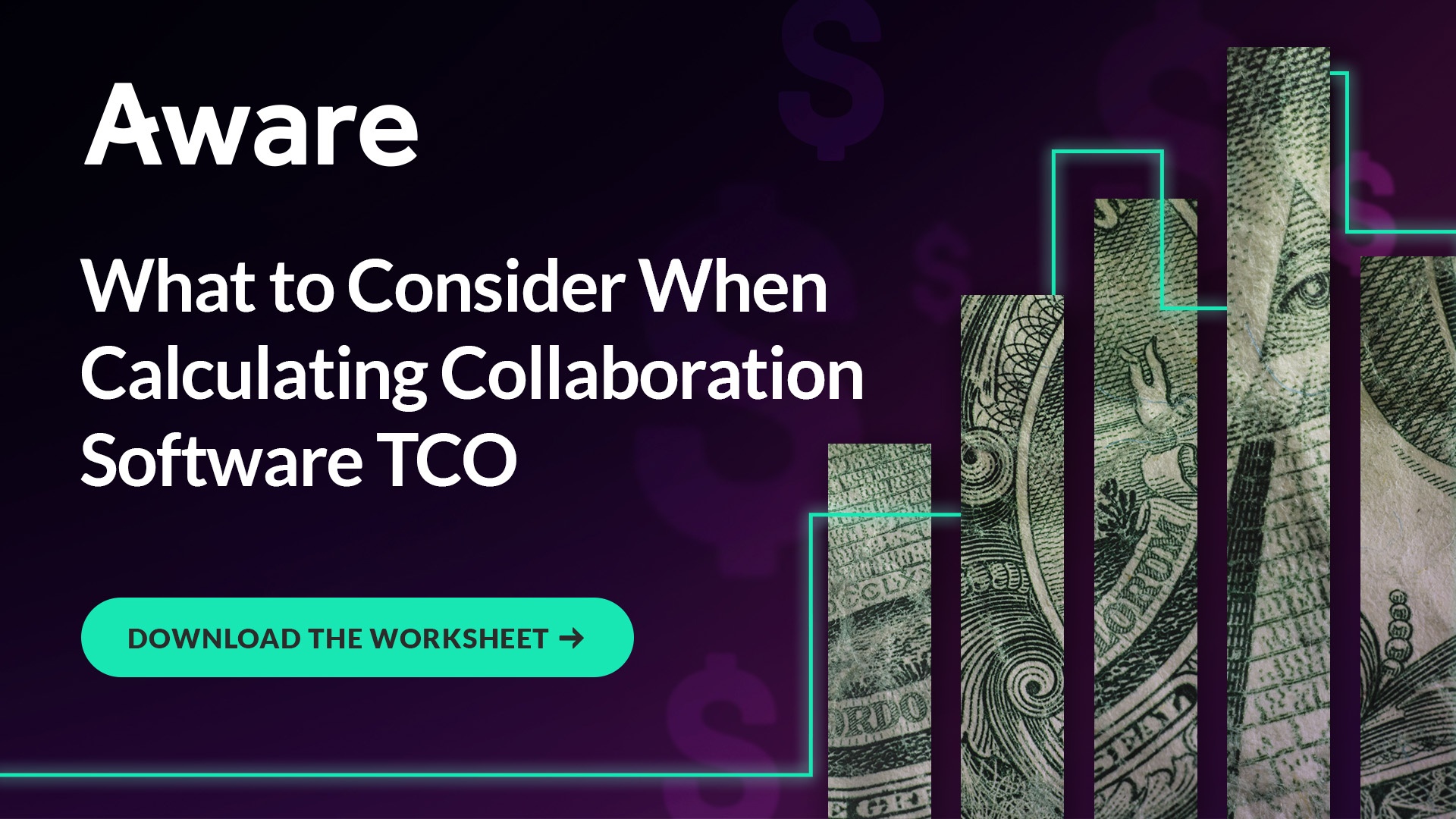Total Cost of Enterprise Collaboration Ownership: What It Is, Why It Matters and How to Manage It
by Aware
In the rush to quickly enable remote work during the current pandemic, enterprise collaboration tools like Slack, Workplace from Facebook and Microsoft Teams experienced a spike of 31% more active authors and 57% more message volume. As organizations begin to build their back-to-work plans, these collaboration technologies remain integral to long-term strategies for getting work done in a post-pandemic world.
Digital collaboration offers many proven benefits, including boosted productivity, reduced turnover and decreased onboarding time. However, in order for leaders to truly embrace these technologies, they need to understand a complete picture of the ROI—which requires looking beyond just subscription fees to understand the total cost of collaboration.
What is Total Cost of Ownership (TCO) for enterprise collaboration software?
Put simply, the total cost of ownership (TCO) for enterprise software is the sum of all direct and indirect costs incurred by that software.
Key Expenses of Digital Workplace TCO
In order to fully understand the ROI of collaboration, start by taking an inventory of the relevant costs. A comprehensive TCO analysis will reveal the subtle, indirect costs that help support an effective digital workplace solution. In a flourishing collaboration environment, organizations typically report four key categories of expenses:
- Software Costs: Typically the cost of the user licenses. Consider this cost both an initial and operational expense. New users in the company require additional licenses, so expect this cost to increase over time.
- User & Admin Support: This includes the cost of training employees, help desk teams and system admins to use the software. Again, consider training expenses as both an initial and operational expense. New employees or users need initial training, as well as ongoing training, to support new software features and functionality.
- External System Interface Costs: Collaboration platforms exist to connect people and tools in order to support efficient digital work. This often requires interfaces and integrations to other highly used systems in the organization. Consider costs of integrations, data-mapping, workflow adjustments and troubleshooting.
- Customizations and Enhancements: If you need specific customizations built into your collaboration network, consider the additional developer costs this work requires. Look for cloud-based, off-the-shelf solutions that don't require development support. Systems like Aware often address critical stakeholder requirements— like bi-directional retention, content moderation, a searchable archive and data hold capabilities—without placing a burden on your IT teams.
Manage Your TCO for Collaboration
Once you understand the holistic cost of ownership, you can move down the path of managing these expenses.
- Capture stakeholder requirements early in the software lifecycle and build a strategy to proactively address must-haves and 'nice-to-haves'.
- When possible, use one vendor to address several requirements. Reducing the number of 3rd party solutions helps limit software and maintenance costs. If your organization uses more than one collaboration technology, look for vendors that integrate with all platforms.
- Use bot technology and rule-based monitoring to automate user training and administrative processes. This drastically reduces the amount of people resources required to maintain the tool.
Protect yourself, your team and your organization from rising collaboration costs, learn more about Aware's modern data governance platform.








